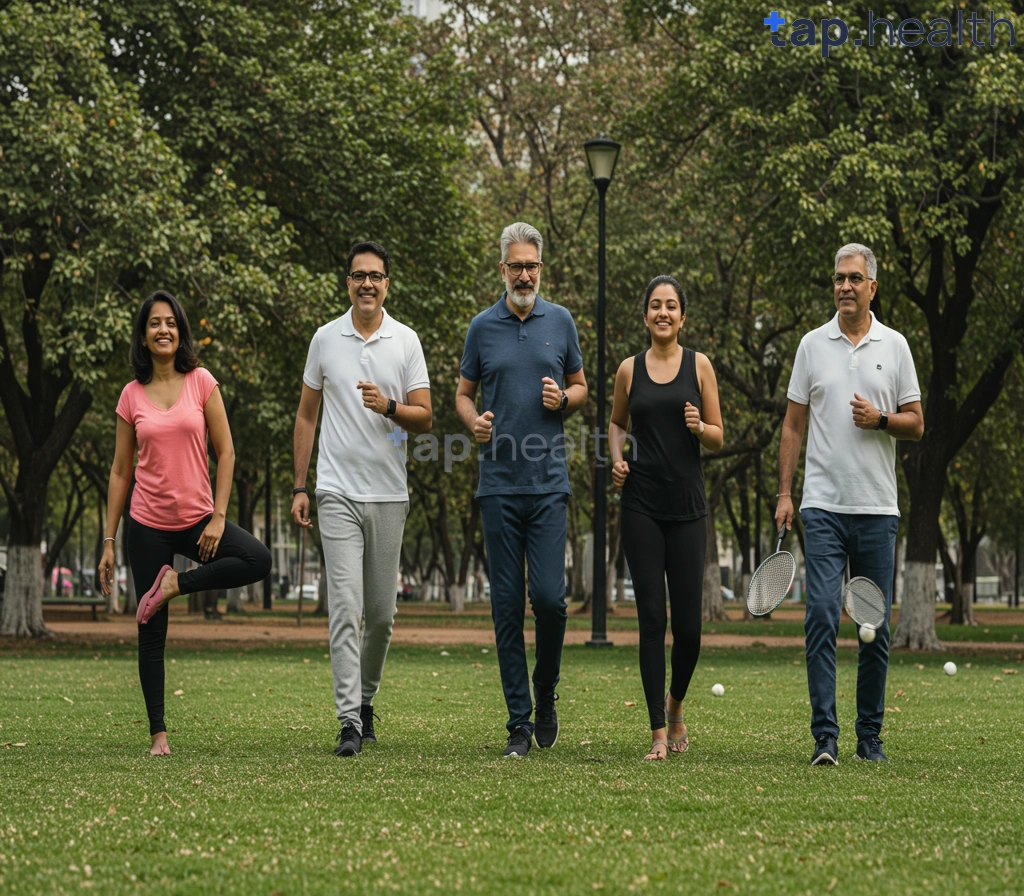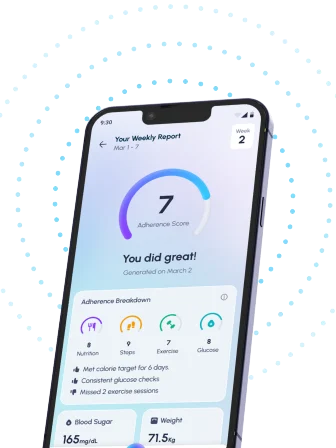Table of Contents
- Conquer Diabetes: Exercise Beyond the Treadmill
- Reimagine Your Fitness: Diabetes-Friendly Workouts
- Diabetes & Exercise: A Guide to Effective Movement
- Stress-Free Fitness for Diabetes Management
- Beat Diabetes: Fun Exercises to Boost Your Health
- Frequently Asked Questions
- References
Feeling overwhelmed by the constant pressure to exercise when you have diabetes? Are treadmill stress tests and monotonous routines leaving you feeling discouraged? Then it’s time to reimagine your approach to fitness! This blog post tackles the challenge head-on, offering practical strategies and inspiring ideas for Conquer Diabetes: Reimagine Exercise Beyond the Treadmill Stress Test. We’ll explore fun, effective ways to incorporate movement into your daily life, helping you manage your condition without the usual drudgery. Let’s discover how to make exercise a joyful part of your diabetes management journey – not a dreaded chore.
Conquer Diabetes: Exercise Beyond the Treadmill
Diabetes affects a significant portion of the population, with 61% of those diagnosed between the ages of 20-64. In hot and humid climates prevalent across India and tropical countries, the thought of intense treadmill workouts can be daunting, even discouraging many from starting a diabetes management plan. But conquering diabetes doesn’t require a gym membership or endless hours on cardio equipment.
Reimagine Your Workout Routine
Think beyond the treadmill. In India and other tropical regions, incorporating enjoyable and culturally relevant activities can make exercise a sustainable part of your lifestyle. Consider invigorating morning walks before the sun gets too intense, practicing yoga in the shade, or engaging in traditional dance forms like Bharatnatyam or Kathak. These activities not only improve cardiovascular health but also offer mental and emotional benefits, crucial for managing the stress often associated with diabetes. Remember that even small amounts of consistent movement are impactful. For more information on the importance of regular exercise, see our article on Why Regular Exercise is Essential for Diabetes Management.
Practical Tips for Tropical Climates
Prioritize hydration: Drink plenty of water before, during, and after exercise. Choose the right time: Avoid peak sun hours and opt for early mornings or evenings for outdoor activities. Listen to your body: Don’t push yourself too hard, especially in the heat. Adapt your routine: If intense exercise feels overwhelming, start with short, manageable sessions and gradually increase duration and intensity. Seek professional guidance: Consult a doctor or certified diabetes educator for personalized exercise recommendations tailored to your specific needs and climate. By embracing culturally relevant and climate-appropriate exercise, you can effectively manage your diabetes and improve your overall well-being. While exercise is crucial, learn more about potentially reversing the condition by reading How to Reverse Diabetes Permanently.
Reimagine Your Fitness: Diabetes-Friendly Workouts
Managing diabetes in hot and humid climates like those prevalent in India and other tropical countries requires a thoughtful approach to exercise. The typical treadmill stress test isn’t always the best option, especially in intense heat. Finding enjoyable, accessible activities is key to long-term success. Remember, managing blood sugar levels often involves careful consideration of carbohydrate intake, with recommendations generally suggesting 45–60 grams of carbs per meal for many individuals, though this varies depending on individual needs and activity levels. For more information on managing your carbohydrate intake, check out our guide on How to Lose Weight with Diabetes Diet Plan.
Adapting Your Routine for the Tropics
Instead of strenuous workouts in the midday sun, consider shifting your exercise to cooler parts of the day—early mornings or evenings. Water-based activities like swimming, aqua aerobics, or even a refreshing walk in a shaded park are excellent alternatives. These activities are gentler on your joints while still providing effective cardiovascular benefits. Yoga and Tai Chi are also ideal options, promoting flexibility, balance, and stress reduction – crucial factors in diabetes management.
Incorporating Regional Activities
Many traditional Indian activities naturally incorporate exercise. Consider incorporating brisk walks or cycling into your daily routine. If you live near a park or open space, utilize that resource for light jogging or other forms of aerobic exercise. Remember to always consult your doctor before starting any new exercise program. Proper hydration is also crucial, especially in hot climates. For more tips on effective management, see our article on 10 Proven Tips for Effective Diabetes Management.
Creating a Sustainable Plan
The key to successful diabetes management through exercise is consistency. Start small and gradually increase the intensity and duration of your workouts. Find activities you genuinely enjoy, and build them into your daily schedule. Remember, even small amounts of physical activity can make a significant difference in your overall health and well-being. Prioritize activities that fit your lifestyle and climate for long-term success in managing your diabetes.
Diabetes & Exercise: A Guide to Effective Movement
Managing diabetes effectively requires a holistic approach, and exercise plays a crucial role. For individuals in Indian and tropical countries, finding suitable and enjoyable physical activity can be particularly important. The heat and humidity can make traditional workouts challenging, but there are many alternatives that can be just as effective. Remember, research shows smokers with diabetes face double the mortality rate from cardiovascular issues, highlighting the critical importance of exercise in mitigating these risks.
Beyond the Treadmill: Exploring Diverse Exercises
Instead of focusing solely on strenuous treadmill sessions, consider incorporating activities better suited to the climate and individual preferences. Yoga, Tai Chi, and walking in the early morning or evening are excellent options. These gentle yet effective exercises improve insulin sensitivity, manage weight, and reduce cardiovascular risk. Furthermore, many traditional Indian dance forms, like Bharatanatyam or Kathak, provide a fantastic cardiovascular workout while promoting flexibility and coordination.
Adapting to the Climate: Practical Tips
Hydration is key in hot and humid climates. Always carry water and replenish fluids regularly during and after exercise. Choose breathable clothing made from natural fabrics like cotton to stay cool. Early morning or late evening workouts are ideal to avoid the peak heat of the day. Listen to your body – if you feel overheated or unwell, stop immediately and rest.
Building a Sustainable Routine
Start slowly and gradually increase the intensity and duration of your workouts. Consistency is crucial; aim for at least 30 minutes of moderate-intensity exercise most days of the week. Consult your doctor or a qualified fitness professional to create a personalized exercise plan that aligns with your health condition and lifestyle. Remember, managing diabetes is a journey, and finding enjoyable forms of movement is essential for long-term success and better cardiovascular health. For more information on how managing your diabetes changes as you age, check out our article on Managing Diabetes as You Age: Challenges and Solutions. Understanding the link between diabetes and obesity is also crucial for effective management; read more in our blog post, Understanding the Link Between Diabetes and Obesity.
Stress-Free Fitness for Diabetes Management
Diabetes impacts millions globally, costing the world economy a staggering $760 billion annually. In hot and humid Indian and tropical climates, the thought of strenuous exercise can be daunting, even discouraging for those managing diabetes. But effective diabetes management doesn’t necessitate grueling treadmill sessions. Instead, focus on stress-free fitness routines that are both enjoyable and sustainable in your environment.
Embrace Gentle Movement
Think beyond the gym. Consider gentle yoga, tai chi, or even brisk walking in the early morning or evening when the temperature is more manageable. These activities improve insulin sensitivity, manage weight, and reduce stress – all crucial for diabetes control. Remember to stay hydrated, especially in tropical climates.
Incorporate Daily Activity
Small changes accumulate. Take the stairs instead of the elevator, walk or cycle for short distances, and incorporate regular stretching into your daily routine. These seemingly minor adjustments significantly contribute to overall physical activity, improving blood sugar levels and cardiovascular health. This is especially important in densely populated Indian cities where public transport is often preferred.
Listen to Your Body
Prioritize consistency over intensity. Find activities you genuinely enjoy, ensuring they are comfortable and safe given your health condition and the climate. Don’t push yourself too hard, especially during the hottest parts of the day. Regular checkups with your doctor are vital. Managing stress is also key, and you can learn more about Effective Stress Management Tips for Better Diabetes Control.
Find Your Fitness Tribe
Join a local walking group or fitness class tailored for individuals with diabetes. The support and camaraderie can enhance motivation and make exercise a more enjoyable, less stressful experience. Many community centers in India offer such programs. Finding a supportive community can make all the difference in maintaining a long-term fitness plan. Understanding how stress hormones affect diabetes can also help you better manage your condition.
Beat Diabetes: Fun Exercises to Boost Your Health
Managing diabetes effectively requires a holistic approach, and exercise plays a vital role. For women in India and tropical countries, this is particularly crucial, given the 40% higher risk of heart disease compared to men with diabetes. Fortunately, conquering diabetes doesn’t mean endless treadmill sessions. Let’s explore some fun and accessible exercises perfect for warmer climates.
Dance Your Way to Better Health
Dancing is a fantastic cardiovascular workout, easily adaptable to different fitness levels. Bollywood dance, for example, is incredibly popular and energetic, making it a fun way to improve heart health and manage blood sugar. Consider joining a local dance class or simply putting on some music at home!
Embrace the Outdoors
The warm climate of India and tropical regions offers opportunities for enjoyable outdoor activities. Swimming is a low-impact exercise that’s gentle on the joints while providing a great cardiovascular workout. Similarly, yoga, a practice deeply rooted in Indian culture, improves flexibility, strength, and overall well-being, contributing significantly to diabetes management. Morning walks or evening strolls in a park offer a refreshing way to incorporate physical activity into your routine. For more tips on managing your diabetes effectively, check out our guide: 10 Proven Tips to Effectively Manage Diabetes | Simple Guide.
Find Your Fitness Niche
Remember, consistency is key. Choose activities you enjoy to make exercise a sustainable part of your lifestyle. Whether it’s Zumba, badminton, cycling, or even brisk walking, find what motivates you and stick with it. Prioritize activities that suit your physical capabilities and the climate, ensuring you stay hydrated and avoid exercising during the hottest parts of the day. Consult your doctor or a certified fitness professional for personalized guidance tailored to your specific needs and health conditions. Given the increased risk of heart disease, it’s also crucial to proactively protect your heart. Learn more about protecting your heart with our guide: Protect Your Heart from Diabetes: 5 Essential Steps.
Frequently Asked Questions
Q1. What types of exercise are best for managing diabetes in hot and humid climates?
In hot and humid weather, opt for culturally relevant and climate-appropriate exercises like yoga, Tai Chi, Indian dance forms, swimming, brisk walking, and cycling. These provide cardiovascular benefits without the strain of strenuous workouts.
Q2. What are the key benefits of exercise for people with diabetes?
Exercise helps improve insulin sensitivity, manage weight, reduce stress, and improve cardiovascular health—all crucial for effective diabetes management.
Q3. How do I safely incorporate exercise into my routine if I have diabetes?
Start slowly, choose activities you enjoy to ensure sustainability, stay well-hydrated, avoid exercising during the hottest parts of the day, and always consult your doctor or a certified diabetes educator for a personalized plan.
Q4. Besides formal exercise, what small changes can I make to improve my health?
Incorporate small, consistent changes into your daily life, such as taking the stairs instead of the elevator. These small actions add up to significant health benefits.
Q5. What other factors are important for managing diabetes alongside exercise?
Managing stress and monitoring your carbohydrate intake are also critical for effective diabetes management. Remember that people with diabetes have an increased risk of heart disease, so maintaining a healthy lifestyle is vital.
References
- A Practical Guide to Integrated Type 2 Diabetes Care: https://www.hse.ie/eng/services/list/2/primarycare/east-coast-diabetes-service/management-of-type-2-diabetes/diabetes-and-pregnancy/icgp-guide-to-integrated-type-2.pdf
- Your Guide to Diabetes: Type 1 and Type 2: https://www.niddk.nih.gov/-/media/Files/Diabetes/YourGuide2Diabetes_508.pdf




